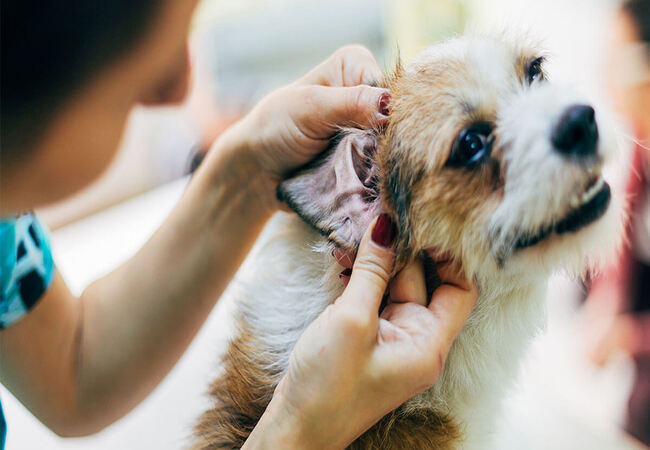Yeast Infections in Dogs: Veterinary Guide & Care Tips 2025 🩺🐾

In this article
Yeast Infections in Dogs: Veterinary Guide & Care Tips 2025 🩺🐾
By Dr. Duncan Houston BVSc
Hello, I’m Dr Duncan Houston BVSc, veterinarian and founder of Ask A Vet. Yeast infections—most commonly caused by the fungus Malassezia pachydermatis—are an itchy, odorous, and often recurrent concern for dogs. They frequently affect skin folds, paws, ears, and facial areas. This detailed 2025 guide will help you recognize signs, understand diagnosis, implement vet-approved treatments, optimize home care routines, and set long-term prevention strategies—using tools like Ask A Vet to support your dog’s comfort and skin health. 💙🐶
1. 🦠 What Is a Yeast Infection?
Malassezia pachydermatis is a yeast normally present on the skin and ears. When skin conditions change—such as in allergies or humid environments—this fungus opportunistically overgrows, causing inflammation known as yeast dermatitis or otitis externa.
2. Common Signs and Symptoms
- 🔴 Itchy, red, inflamed skin—especially in skin folds, armpits, groin, and paws.
- 🟫 Greasy, oily, thickened skin (“elephant skin”) with hyperpigmentation.
- 👃 Musty or cheesy odor, often noticeable from ears or paws.
- 👂 Ear problems—otitis externa: head shaking, itchiness, brown waxy discharge, and odor.
- 💇 Hair loss, scratching, rubbing on itchy areas.
- 🛏 Chronic recurrence, especially in dogs with allergies or oily skin.
3. Who’s Most Susceptible?
Yeast thrives in warm, moist areas, making the following dogs more prone:
- Breeds with folds—Cocker Spaniels, Basset Hounds, Bulldogs, Poodles, and Spaniel types.
- Dogs with floppy ears or who swim often.
- Pets with allergies, oily skin, endocrine disorders, immunosuppression, or on frequent antibiotics/corticosteroids.
4. Veterinary Diagnosis 🩺
- Skin cytology: A sample of skin cells is checked for yeast on a slide.
- Ear swabs: confirming yeast presence & monitoring ear health.
- Review of history: allergies, medications, moisture, and swimming routines.
Proper diagnosis ensures targeted treatment and avoids misdiagnosis of similar conditions like bacterial infections or mites.
5. Veterinary-Treated Therapies
5.1 Topical Treatments
- Medicated shampoos—containing ketoconazole, miconazole, chlorhexidine; leave-on for 5–10 minutes, repeat weekly for 2–12 weeks.
- Topical creams/sprays/mousse—for localized areas like skin folds.
- For ears: Duotic (terbinafine/betamethasone); vet-recommended anti-fungal and anti-inflammatory ear drops—licensed in 2024.
5.2 Systemic Medications
- Oral antifungals (ketoconazole, itraconazole, fluconazole) may be needed for widespread or deep infections.
- Anti-inflammatories—support recovery in severely inflamed cases.
5.3 Treat Underlying Conditions
- Identify and manage allergies, endocrine issues, or oily skin problems.
- Adjust hygiene, bathing routines, ear dryness protocols.
6. 🏡 Home Care & Wellness Tips
- Routine grooming—dry folds & ears well; maintain clean skin.
- Bathing schedules—weekly to twice-weekly using medicated shampoo during flare-ups.
- Ear care—dry ears after water exposure; monthly prophylactic cleaners.
- Moisture control—keep paws, facial folds dry, especially after walks or rain.
- Diet & supplements—omega-3/6 and fatty acid supplements support skin barrier function.
- Probiotics may help balance skin-gut immunity.
7. Monitoring & Preventing Recurrence 📅
- Track symptoms—itching, redness, odor, earwax in the Purrz app.
- Schedule follow-up cytology and ear checks every 2–4 weeks until clear.
- Maintain long-term grooming and skin care routines.
- Manage allergies and environmental triggers proactively.
8. 🧩 Ask A Vet Resources
- Ask A Vet: Remote consults for symptom evaluation, medication guidance, and advice on home care messaging/testing.
9. 🚨 When to See the Vet Immediately
- Ear damage or pain, head tilt, imbalance
- Signs of bacterial infection—swelling, pus, high fever
- Persistent itching, weight loss, lethargy, decreased appetite
10. Final Thoughts 📝
Yeast infections in dogs are common, but with timely veterinary care, the right treatments, and consistent home hygiene, they’re fully manageable. In 2025, combining medical essentials with wellness tools from Ask A Vet provides a winning approach to soothe symptoms, treat infections, and prevent recurrences. Let’s bring comfort—and fresh, healthy skin—back to your beloved companion. 🐾💙
If you suspect a yeast infection, schedule a telehealth visit at AskAVet.com, find vet-recommended shampoos and ear care kits at , 🌟






